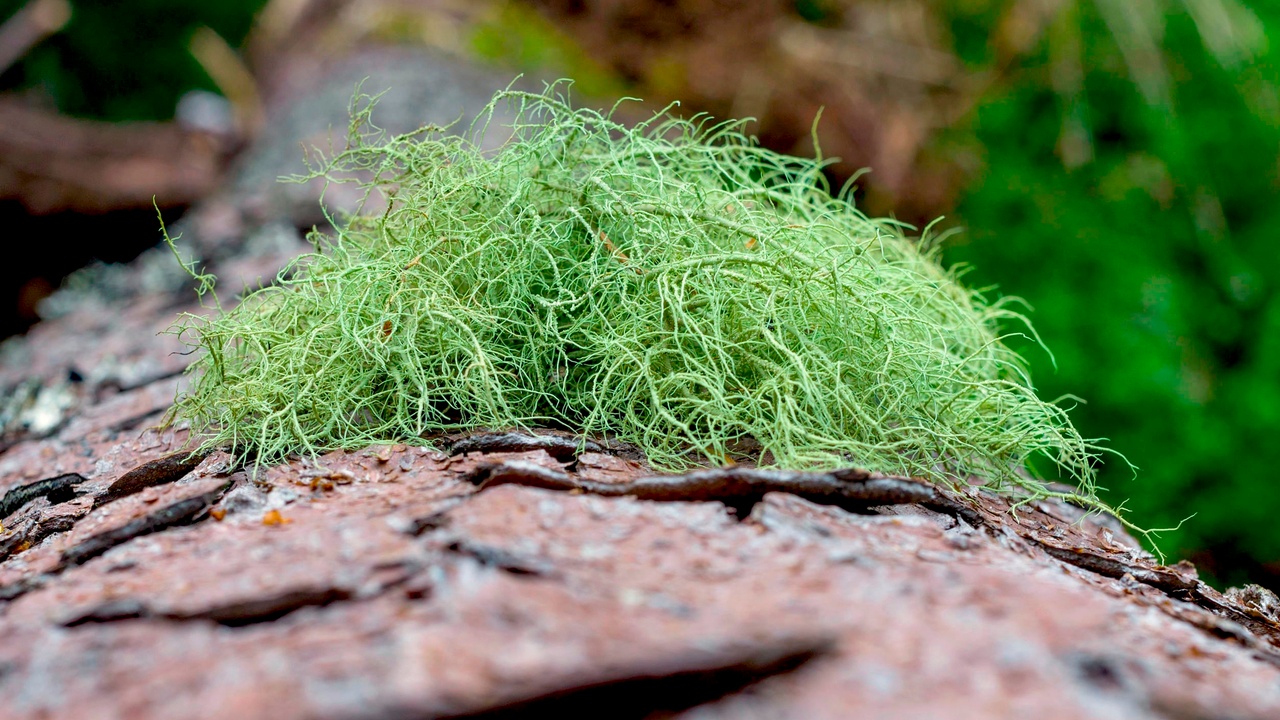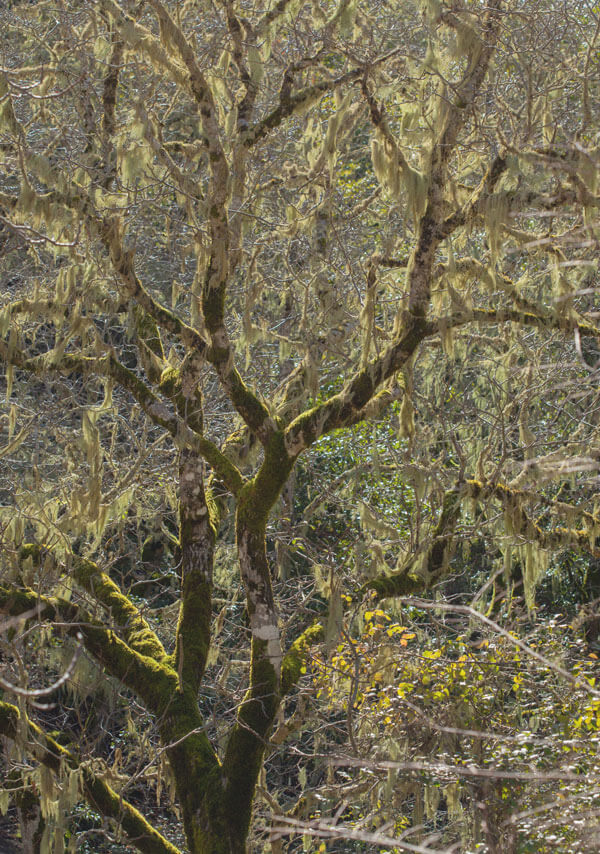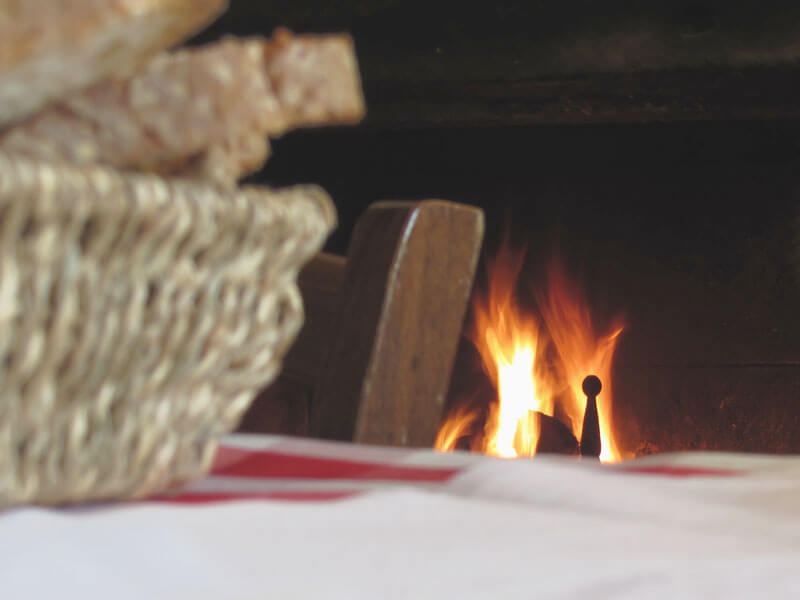Usnea lichen: medicinal uses and identification

by Corinna Wood
Mystified by the mysterious medicinal usnea? It’s true, usnea lichen is considered an herbal medicine–yet it’s technically not actually even a plant!
You may be looking for an herb to support immunity, and you stumbled across usnea. Or perhaps you’ve noticed a fuzzy lichen on branches blown down on the trail—and you’re intrigued at the idea of making medicine from them.
This unique and endearing organism is quite prolific in moist forests—and contains potent antimicrobial properties that have long been used to counter infection in various parts of the body.
Let’s look at how to find, identify, prepare and utilize usnea, so you too can incorporate its medicinal benefits into your herbal apothecary. You ready?
Table of contents
Identifying usnea
 As I began my study of herbs decades ago in the Pacific Northwest, to my delight, I soon discovered usnea.
As I began my study of herbs decades ago in the Pacific Northwest, to my delight, I soon discovered usnea.
Marveling at the clumps of usnea draping from the branches a foot or more, I exclaimed that they mimicked spooky Halloween decorations.
“Yup, that’s called old man’s beard,” I was told. “And you can make medicine of it . . . ”
Now, that aroused the curiosity of my wise woman herbalist within!
I promptly set out to determine exactly how to identify this powerful lichen. When it comes to herbs, first things first—we always have to be positive of the identification.
Hang on, if usnea is not technically a plant, what is usnea anyways?
A fungus & an algae
 Usnea is classified as a lichen—a symbiosis of a fungus and algae.
Usnea is classified as a lichen—a symbiosis of a fungus and algae.
To this day, my go-to method for identifying usnea is to pull a "string" of the hairy tufts apart.
As the greenish-grey “coat” or covering (the algae) of the strand separates, it will reveal a white thread (the fungus) in the middle. That center white thread stretches like a rubber band before breaking.
Since you generally won’t find usnea in your field guides (since it’s not a plant), you may need to rely on in-person confirmation of the identity of the fuzzy clump in your hand. When in doubt, always consult one who knows.
Botanical name
The botanical name is Usnea spp. Let’s break that down. That means that Usnea is the genus. And that there are various species within the Usnea genus (spp. stands for multiple species). The botanical name is also the common name: simply called “usnea.”
You may also sometimes hear the common name “old man’s beard”—however, like many common names, that can refer to various plants. So the botanical name is always the most accurate.
Usnea barbata is one of the most well-known species. However, the various species of usnea are difficult to distinguish from one another, and are considered to have equivalent medicinal uses. So once you determine you have Usnea spp, you have medicine in your hands.
As you know, it's essential to positively identify any plants you're harvesting for food or medicine. First things first: Grab my free guide on 3 Poisonous Plants to Watch Out For (pdf) so you can stay safe on your herbal adventures.
Finding usnea in your neck of the woods
 Usnea grows abundantly especially in areas with abundant moisture. In the United States, it’s most prolific in the Pacific Northwest.
Usnea grows abundantly especially in areas with abundant moisture. In the United States, it’s most prolific in the Pacific Northwest.
It’s also considered abundant along the northern Atlantic, and runs eastward to the Great Lakes—though it grows in inches rather than by the foot. I often see usnea throughout the temperate rainforests of the Appalachian Mountains as well.
Commonly found on coniferous trees, usnea also grows on the bark of tulip poplar; hardwoods such as oak, hickory and walnut; and fruit trees in the Rose family such as apple.
If you’re lucky enough to have usnea growing in your neck of the woods, you may find it on branches blown down after a windstorm.
If you’re harvesting usnea fresh off the tree, don’t take more than ¼ to ⅓ of it, as it’s slow to regrow. You can harvest usnea year round, although I find the fall is often when it’s most lush from cool weather and heavy rains.
Usnea benefits and medicinal uses
 I turn to usnea for various acute situations for supporting the immune system, often combining it with echinacea for a broad effect.
I turn to usnea for various acute situations for supporting the immune system, often combining it with echinacea for a broad effect.
Usnea is immune-enhancing and tonifying for the immune system against both bacterial and viral infections. Usnea is especially rich in usnic acid, a lichen-based antibacterial bitter compound first studied in Germany as a component for holistic health.
As acupuncturist Jessica Godino writes...
“Usnea is an immune system tonic that can be used in acute situations as well as for long term immune enhancement and general prevention. It has no side effects or contraindications, and is safe for children and animals. It can be used along with or instead of echinacea. Usnea is more specific for strep and staph infections than echinacea, and its antibiotic properties are most specific to the respiratory and urinary systems.
“Use it to help heal respiratory and sinus infections, bronchitis, pneumonia, strep throat, colds, flues, as well as urinary tract, kidney, and bladder infections. Usnea is also beneficial for women with yeast infections, trichonomosas, bacterial vaginosis, and chlamydia. It can be helpful for people with chronic fatigue, HIV, herpes, and other chronic conditions related with depressed immunity."
Two Methods of Making Usnea Tincture

The preferred medical extraction method for usnea is as an alcohol-based tincture.
Although I’ve been known to chew on bits of usnea lichen straight off the tree, this tough lichen is not commonly considered a food to incorporate into meals–and doesn’t make much of a tea either.
Below are my two top methods for making tincture from usnea. The first is the one I consider most effective, although both seem to work well. Ideally, your tincture will turn out brownish-orange in color.
You’ll start with your freshly-harvested usnea, and then choose one of the two following methods.
Usnea Tincture Method 1: Pre-Boiled
- Put usnea in a pot with just enough cold water to cover the herbal material.
- Boil for 15-25 minutes, or until half the water has boiled off, and the liquid is becoming brown/orange.
- Pour the contents–including both usnea and all the liquid–into a jar. You’ll need to find a jar sized such that the usnea will fill the jar close to the top, with the water level only reaching halfway or less up the jar.
- Fill the jar the rest of the way to the top with alcohol. Use as high-proof alcohol as you can find, preferably 190 proof. (The proof system is based on 200, so 190 proof is 95% alcohol. 160 to 180 proof alcohol will also do just fine.)
- Label your jar with the date and contents and cover it with a lid.
- Brew for 6 weeks, and then strain out the usnea material, storing your tincture in a cabinet or brown glass.
Usnea Tincture Method 2: Folk Brew
- Fill a jar of your choice with usnea. Pack the jar full, although not so tight that the alcohol can’t seep in.
- Fill the jar again with 100 proof vodka. Make sure the alcohol totally covers the plant material.
- Label your jar with the date and contents and cover it with a lid.
- Let it sit in a cabinet for 6 weeks.
- After 6 weeks strain off the liquid and store your tincture in a cabinet or brown glass.
Tinctures stored in a cabinet or in brown glass generally keep for 3-5 years.
Usnea tincture dosage
 Whether you make your tincture yourself or get it from an herbalist, now you’re ready to add an amber dropper bottle of usnea tincture to your medicine chest.
Whether you make your tincture yourself or get it from an herbalist, now you’re ready to add an amber dropper bottle of usnea tincture to your medicine chest.
The dosage of usnea is usually 1-2 droppersful (25-50 drops) up to every 2 hours. In less acute situations, you might just take it 1-2 times/day. I am not aware of any known side effects of usnea, even in large doses.
Like any tincture, you can adjust the dosage accordingly for children (or animals) by body weight. So whereas 25-50 drops is a standard dosage for 150 lb adult, you would cut that proportionally to 5-10 drops for a 30 lb child.
Demystifying usnea
 Just as women throughout various parts of the world have known and loved usnea over the ages, you too can incorporate this unique and charming lichen into your herbal apothecary.
Just as women throughout various parts of the world have known and loved usnea over the ages, you too can incorporate this unique and charming lichen into your herbal apothecary.
Keep an eye out for usnea at your feet on windblown branches.
Just as usnea clings to those branches, you’ll keep usnea close by your side as an herbal ally.
Just choose one of the two simple methods described to make your own tincture–or buy a bottle of tincture at your local herb shop.
Either way, you’ll add a powerful antimicrobial medicine to your apothecary. For those days when the going gets rough, usnea is one tough cookie to have on your side.
______
If you found this article helpful, spread the wise woman ways and share with your friends by tapping the button below~
~ The commenting section is now closed ~
If you're looking for usnea tincture or have questions about using usnea, reach out to Red Moon Herbs.







